Commercial Property Prices Continued To Advance In First Quarter Of 2019 On Higher Sales Volume
CCRSI RELEASE – April 2019
(With data through March 2019)
Print Release (PDF)
Complete CCRSI data set accompanying this release
This month's CoStar Commercial Repeat Sale Indices (CCRSI) provides the market's first look at commercial real estate pricing trends through March 2019. Based on 1,157 repeat sale pairs in March 2019 and more than 208,000 repeat sales since 1996, the CCRSI offers the broadest measure of commercial real estate repeat sales activity.
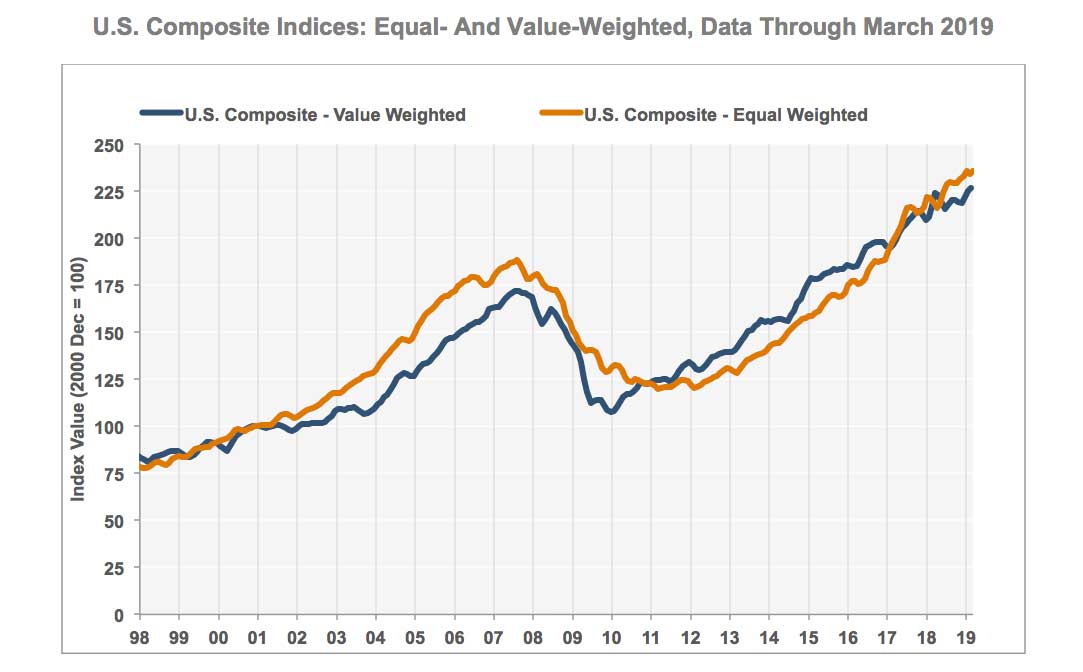
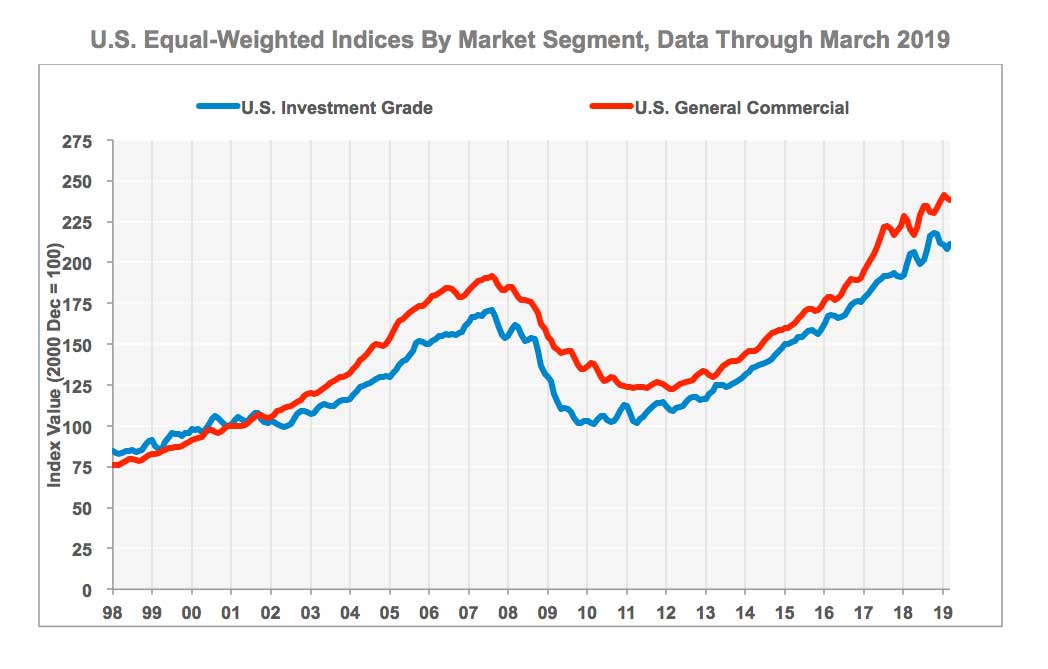
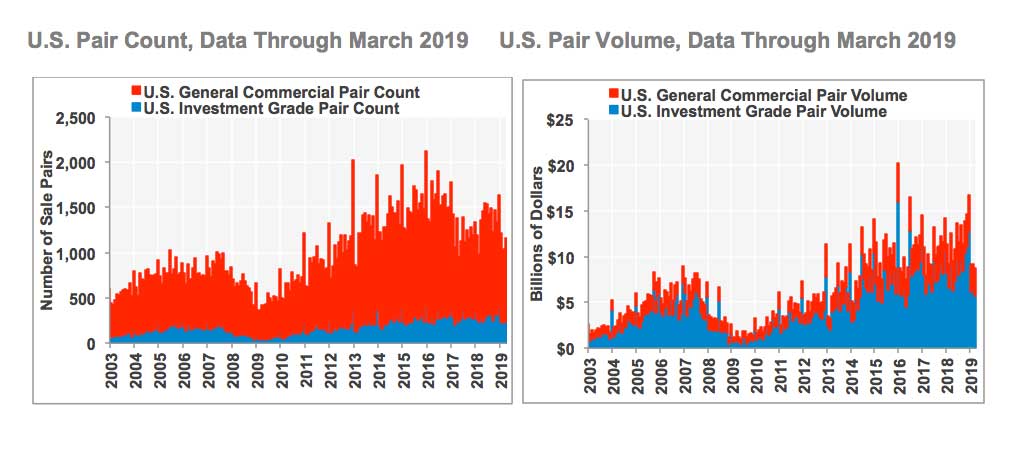
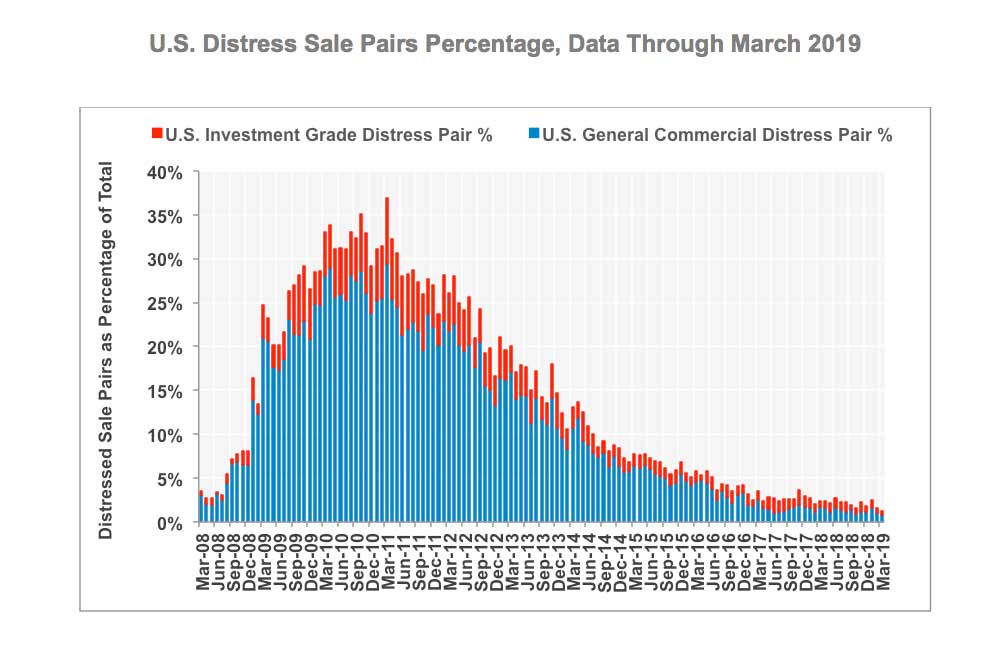
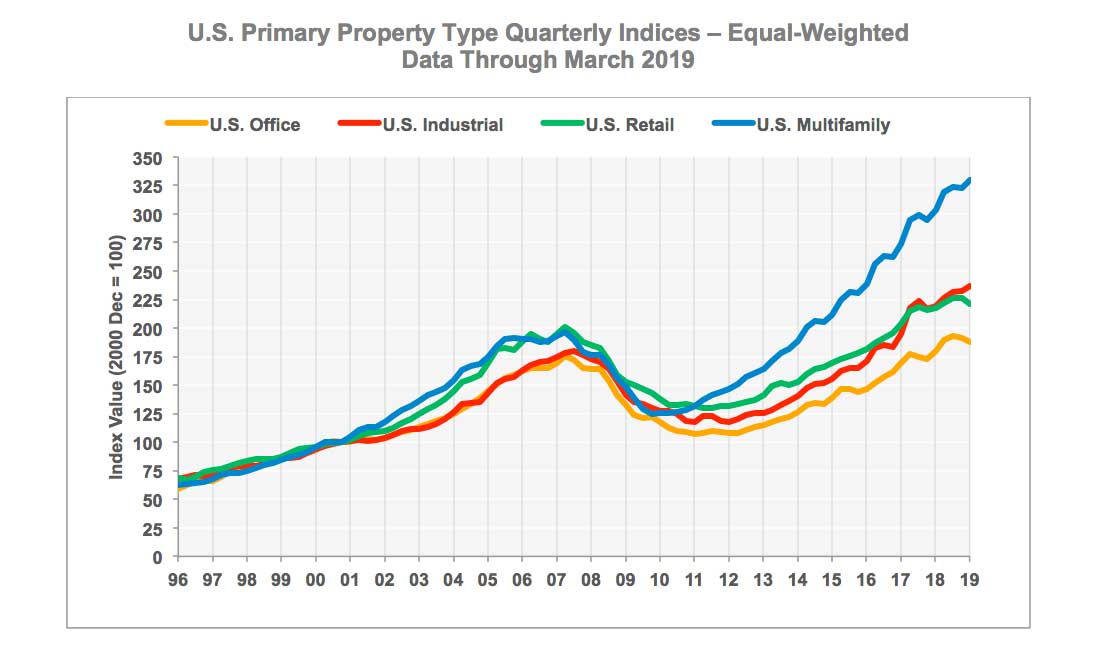


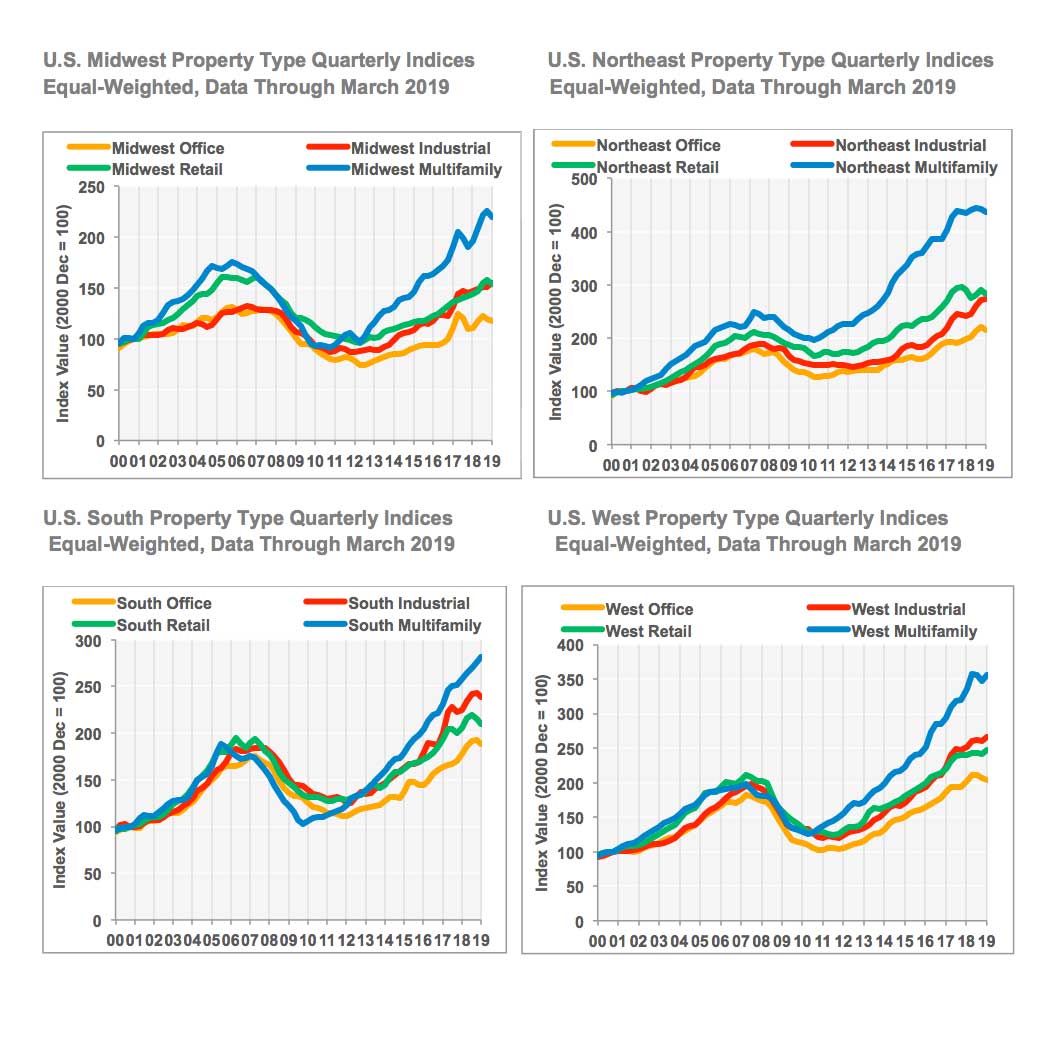
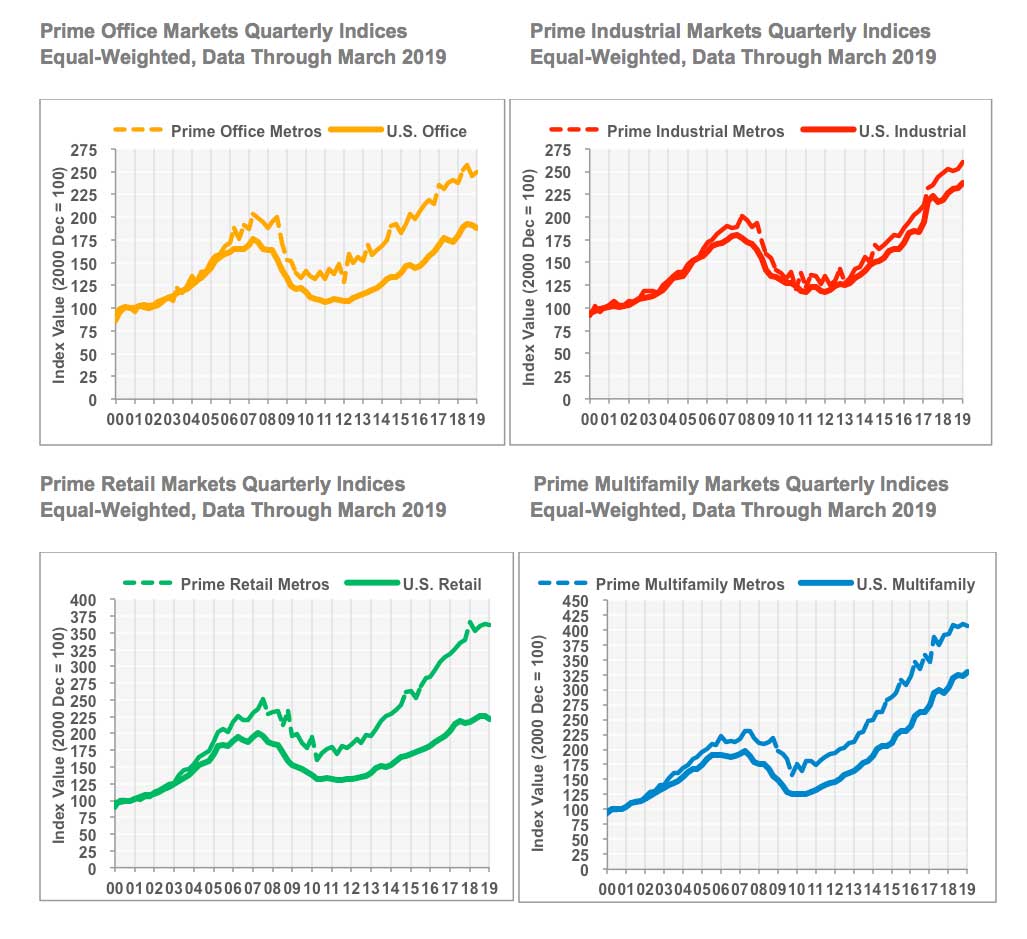
CCRSI National Results Highlights
-
COMPOSITE PRICE INDICES POST SOLID FIRST QUARTER GAINS. The monthly U.S. Composite Index consists of both equal-weighted and value-weighted versions. The value-weighted U.S. Composite Index, which reflects the larger asset sales common in core markets, rose 3.6% in the first quarter of 2019, contributing to a growth rate of 4.5% for the 12-month period ended in March 2019. Meanwhile the equal-weighted U.S. Composite Index, which reflects the more numerous but lower-priced property sales typical of secondary and tertiary markets, increased by 1.3% in the first quarter of 2019 and 7.8% in the 12-month period ended in March 2019. The recent stronger momentum in the equal-weighted index reflects a maturing cycle for commercial property investment, especially for the high-value properties in core markets that led the recovery in commercial property prices.
-
ALTHOUGH PRICES ACROSS REGIONS AND PROPERTY TYPES WERE UP, FIRST QUARTER GAINS SMALLER THAN PREVIOUS YEAR’S. The four main property-type and four regional indices all posted positive growth in the 12-month period ended in March 2019, although there was a deceleration in the rate of growth from the previous 12-month period ended in March 2018. A maturing real estate cycle and already high pricing for commercial property in many markets may be contributing factors to the recent slower price growth.
-
INDUSTRIAL AND MULTIFAMILY CLAIMED LARGEST PRICE GROWTH AMONG MAJOR PROPERTY TYPE INDICES. Continued strong fundamentals in the multifamily and industrial property sectors supported pricing gains in the Multifamily and Industrial indices of 8.5% and 8.2% respectively, during the 12-month period ended in March 2019. In comparison, price growth in the Office and Retail indices registered 4.4% and 1.6%, respectively, for the same period.
-
SALES VOLUME STRONGER IN GENERAL COMMERCIAL SEGMENT. Despite smaller-sized pricing gains, investors remained extremely active. Composite pair volume totaled $143.1 billion for the 12-month period ended in March 2019, an increase of 5.8% from the 12-month period ended in March 2018. Investment momentum has continued to shift towards the General Commercial segment in the last 12 months. Composite pair volume in the General Commercial segment rose 8.9%, in the 12-month period ending in March 2019, while increasing 4.6% in the Investment-Grade segment over the same period.
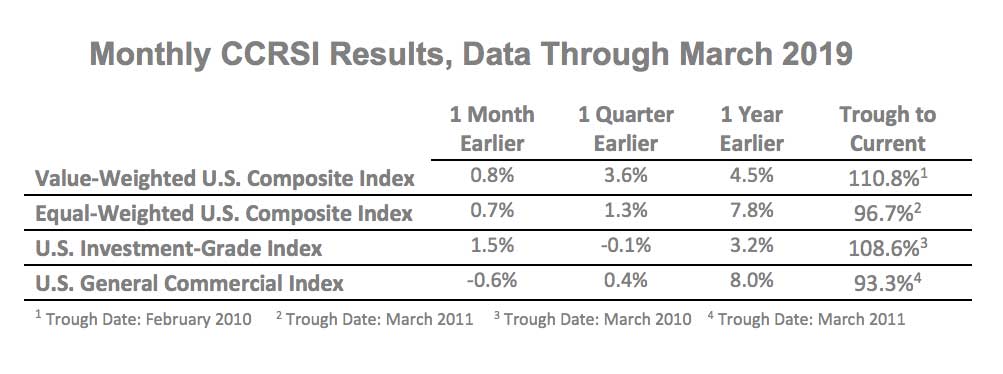
Quarterly CCRSI Property Type Results
-
PRICE GROWTH SLOWS ACROSS FOUR MAIN PROPERTY SECTORS. The Industrial and Multifamily Indices posted the strongest price growth during the 12-month period ended in March 2019, while price increases for the Office and Retail Indices were more modest. The prime markets indices within each property sector, which are dominated by the large, core, coastal metros, generally increased at a slower pace than the national property type indices for the 12-month period ended in March 2019, suggesting that pricing momentum is stronger in lower-priced properties more prevalent in small and mid-size markets outside the large gateway markets.
-
U.S. MULTIFAMILY INDEX PRICING REMAINED RESILIENT. Although growth slowed from its double-digit pace in the 12-month period ending in March 2018, the U.S. Multifamily index advanced 2.1% in the first quarter of 2019 and 8.5% in the 12-month period ended in March 2019. Supply and demand fundamentals remained solid in the multifamily sector, marked by record steady rent growth and high occupancy with relatively low volatility. Meanwhile, the Prime Multifamily Metros Index increased 3.2% in the 12-month period ended in March 2019, a slower rate than the broader market, suggesting weaker price growth in high-value properties in primary markets.
-
U.S. INDUSTRIAL INDEX HAD THE SECOND-STRONGEST GROWTH RATE IN THE PAST 12 MONTHS. The U.S. Industrial index expanded 2.1% in the first quarter of 2019 and 8.2% in the 12-month period ended in March 2019. By comparison, the U.S. Industrial Index advanced 12.4% in the 12-month period ending in March 2018. However, investors continued to favor industrial property, as vacancy rates hovered near a cyclical low of 5%, even amid an uptick in construction, and rent growth registered 5.2% in the 12-month period ended in March 2019. The Prime Industrial Metros index increased 4.6% in the 12-month period ended in March 2019 and is now 29.8% above the peak reached at the height of the last cycle in 2007.
-
OFFICE INDEX GROWTH REMAINED MODERATE. Slower working-age population growth and changes in workplace design that have led to space-use efficiencies and a lower square footage per worker have produced headwinds to office demand this cycle. However, modest supply additions have kept fundamentals in check. Price increases were in the middle of the pack for the U.S. Office Index, which advanced 4.4% in the 12-month period ended in March 2019. Unlike the three other property types, pricing at the top end of the office market remained firmer, as the Prime Office Metros index advanced by a strong 5.2% in the 12-month period ended in March 2019.
-
U.S. RETAIL INDEX GROWTH CONTINUED TO LAG. Retail closures have continued to dampen comparable store sales, negatively impacting vacancies, rents and investment. The U.S. Retail Index fell 2.4% in the first quarter of 2019, resulting in a modest expansion of 1.6% in the 12-month period ended in March 2019. Core markets were not immune to weakness in the sector as the Prime Retail Metros Index dipped 0.9% in the 12-month period ended in March 2019.
-
U.S. HOSPITALITY PRICING POSTS MODEST INCREASE. The U.S. Hospitality Index was up 1.7% in 12-month period ended in March 2019, which marked a significant moderation from the 9.9% annual growth rate in the prior 12-month period ending in March 2018. National hotel occupancies remain above last cycle’s highs, which has supported continued room rate and revenue per available room (RevPAR) growth as well as investor demand for selective hotel assets.
-
U.S. LAND INDEX FELL 10.4%. The U.S. Land Index is generally the most volatile of the property type indices. After an increase of nearly 30% in the prior annual period ending in March 2018, the U.S. Land Index has since gone through a correction. While strong demand for development sites has supported new construction over the last several years, the recent decline in this index may indicate a pullback in demand for new development activity as the cycle ages.
Quarterly CCRSI Regional Results
-
SOUTH REMAINS TOP PERFORMING REGIONAL INDEX. While a higher concentration of the core coastal markets that led the recovery helped propel earlier and stronger pricing growth in the Northeast and West Indices, the South region’s favorable population demographics and employment growth as well as more affordable pricing has provided it with stronger momentum in price growth in 2018 and into 2019. The South Index advanced 6.3% in 12-month period ending in March 2019, with the strongest growth coming from the South Multifamily and Industrial Indices. The South Multifamily Index increased 9.2% and the South Industrial Index was up 6.5% in the 12-month period ended in March 2019.
-
MULTIFAMILY PRICE INDEX BOLSTERED MIDWEST REGION. The Midwest Multifamily Index increased 12.3% in the 12-month period ended in March 2019, the second-strongest annual growth among the 16 regional property type indices. This expansion in the multifamily segment supported an increase of 6.3% in the overall Midwest regional index in the 12-month period ended in March 2019. Despite recent growth, the Midwest regional index level is still 30% or more below that of the other regions.
-
MODERATE GROWTH SEEN IN WEST REGION. The West Composite Index advanced 4.6% in the 12-month period ended in March 2019, this was less than half the annual growth of 11.6% in the prior 12-month period ending in March 2018. The slowdown was largely attributed to the West Office Index, which experienced the strongest slowdown in growth. It increased just 0.5% in the 12-month period ended in March 2019, well down from a growth rate of 9.7% in the 12-month period ended in March 2018.
-
NORTHEAST REGIONAL INDEX GROWTH HAS ALSO DECELERATED. While the Northeast led the pricing recovery coming out of the recession, all four regional indices have since reached new historical highs, and subsequent pricing gains have naturally slowed. The Northeast Composite Index rose 1.3% in the 12-month period ended in March 2019, down from an annual growth rate of 5.8% in the prior annual period ending in March 2018. Gains in the Northeast Industrial and Office indices were offset by losses in the Northeast Retail Index in the 12-month period ended in March 2019.
About The CoStar Commercial Repeat-Sale Indices
The CoStar Commercial Repeat-Sale Indices (CCRSI) is the most comprehensive and accurate measure of commercial real estate prices in the United States. In addition to the national Composite Index (presented in both equal-weighted and value-weighted versions), national Investment-Grade Index, and national General Commercial Index, which we report monthly, we report quarterly on 30 sub-indices in the CoStar index family. The sub-indices include breakdowns by property sector (office, industrial, retail, multifamily, hospitality, and land), by region of the country (Northeast, South, Midwest, and West), by transaction size and quality (general commercial, investment-grade), and by market size (composite index of the prime market areas in the country).
The CoStar indices are constructed using a repeat sales methodology, widely considered the most accurate measure of price changes for real estate. This methodology measures the movement in the prices of commercial properties by collecting data on actual transaction prices. When a property is sold more than once, a sales pair is created. The prices from the first and second sales are then used to calculate price movement for the property. The aggregated price changes from all of the sales pairs are used to create a price index.

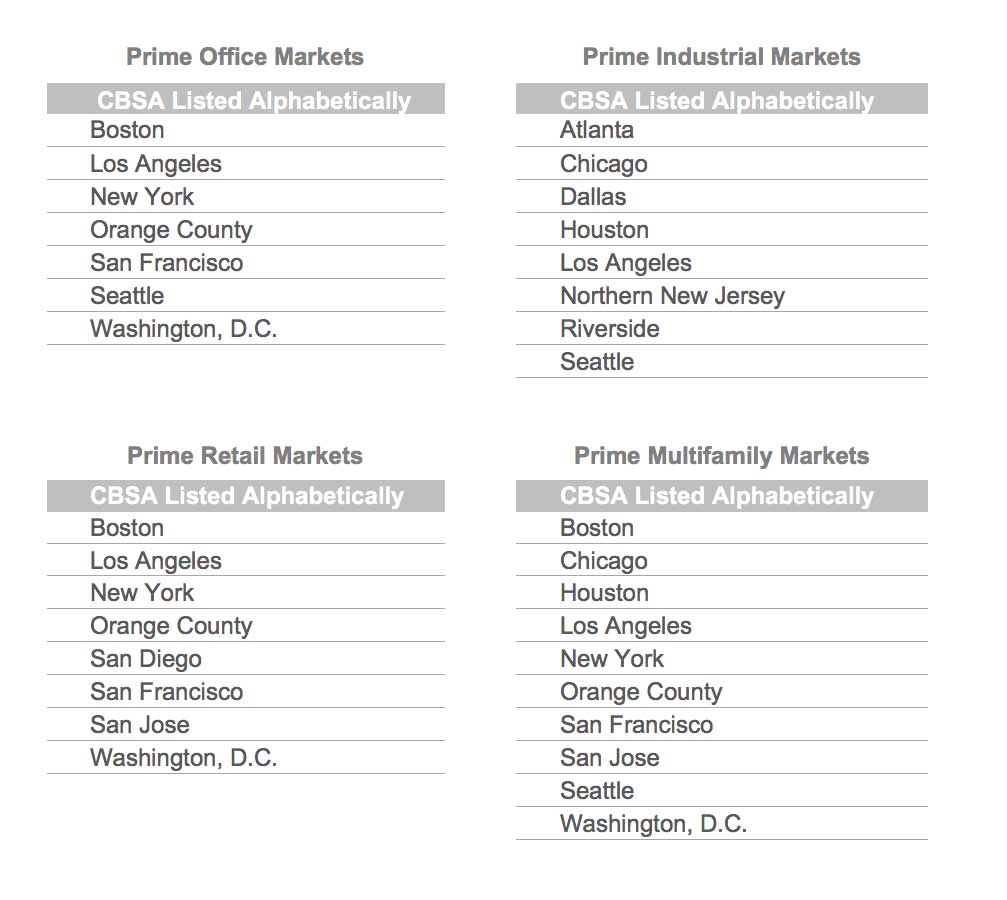
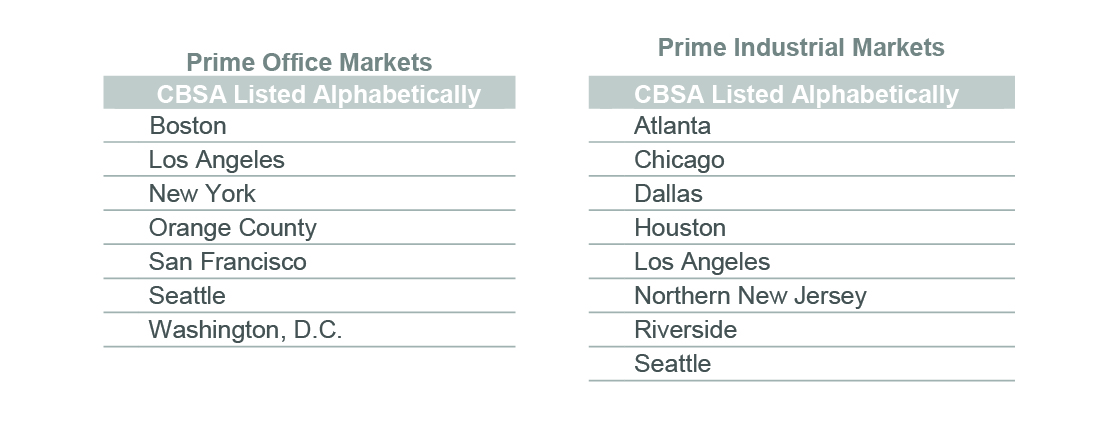
Contact:
Matthew Blocher, Senior Director, Marketing Communications, CoStar Group mblocher@costar.com.
For more information about the CCRSI Indices, including the full accompanying data set and research methodology, legal notices and disclaimer, please visit https://costargroup.com/costar-news/ccrsi.
ABOUT COSTAR GROUP, INC.
CoStar Group, Inc. (NASDAQ: CSGP) is the leading provider of commercial real estate information, analytics and online marketplaces. Founded in 1987, CoStar conducts expansive, ongoing research to produce and maintain the largest and most comprehensive database of commercial real estate information. Our suite of online services enables clients to analyze, interpret and gain unmatched insight on commercial property values, market conditions and current availabilities. LoopNet is the most heavily trafficked commercial real estate marketplace online with approximately 5 million monthly unique visitors per month. Realla is the UK’s most comprehensive commercial property digital marketplace. Apartments.com, ApartmentFinder.com, ForRent.com, ApartmentHomeLiving.com, Westside Rentals, AFTER55.com, CorporateHousing.com, ForRentUniversity.com and Apartamentos.com form the premier online apartment resource for renters seeking great apartment homes and provide property managers and owners a proven platform for marketing their properties. CoStar Group’s websites attracted an average of approximately 42 million unique monthly visitors in aggregate in the fourth quarter of 2018. Headquartered in Washington, DC, CoStar maintains offices throughout the U.S. and in Europe and Canada with a staff of over 3,700 worldwide, including the industry’s largest professional research organization. For more information, visit www.costargroup.com.
This news release includes "forward-looking statements" including, without limitation, statements regarding CoStar's expectations, beliefs, intentions or strategies regarding the future. These statements are based upon current beliefs and are subject to many risks and uncertainties that could cause actual results to differ materially from these statements. The following factors, among others, could cause or contribute to such differences: the risk that the trends represented or implied by the indices will not continue or produce the results suggested by such trends, including trends related to commercial real estate fundamentals, demand, price growth or deceleration, absorption and a maturing real estate cycle; and the risk that transaction volume and commercial real estate pricing will not continue at the levels or in line with the trends indicated in this release. More information about potential factors that could cause results to differ materially from those anticipated in the forward-looking statements include, but are not limited to, those stated in CoStar’s filings from time to time with the Securities and Exchange Commission, including in CoStar’s Annual Report on Form 10-K for the year ended December 31, 2018, and CoStar’s Quarterly Report on Form 10-Q for the quarter ended March 31, 2019, each of which is filed with the SEC, including in the “Risk Factors” section of those filings, as well as CoStar’s other filings with the SEC available at the SEC’s website (www.sec.gov). All forward-looking statements are based on information available to CoStar on the date hereof, and CoStar assumes no obligation to update or revise any forward-looking statements, whether as a result of new information, future events or otherwise.
-

